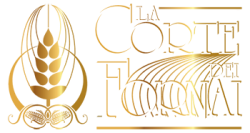You need to signal to Google that your content is trustworthy and well-researched. Think of it as borrowing someone else’s credibility to make your own content more credible. Instead of just placing random outbound links, choose your sources strategically.
A Comprehensive On-Page SEO Checklist for 2024
And optimizing your images can boost their appearance in Google Image Search, leading to additional traffic. By focusing on key on-page elements you can improve your site’s visibility and search performance. Each page on your website should have a unique, descriptive title tag.
Add relevant links.
Write short and descriptive titles – A page title shouldn’t be long. The general recommendation is to keep it below 70 characters because this is the average number of characters Google displays in the search results. If you focus on the right metrics, you may see how readers respond to your content. Since Google started to show favicons in the mobile SERPs, they have become an element SEO Anomaly that may influence the CTR. Write a unique description for all your main pages, homepage, posts and categories.
Step #10: Improve and Update Your Content
On-Page SEO involves optimizing web page elements to improve search engine rankings and attract organic traffic. For example, if you’re targeting the keyword “best coffee shops,” you’d include this keyword in your page title, meta description, and throughout your content. Some brands prefer to use our content strategy to create their own blogs. Using an in-depth on-page SEO checklist, we’ll create high-quality blogs and web pages that rank and convert. A well-crafted URL structure helps your on-page SEO — it’s like giving your web pages a good road map. Think of it as a friendly address that guides search engines and invites users to explore your content.
In this case, it means that the page has traffic potential, and you may note in your SEO plan that it needs optimization and updating. We have a team of over 500 experts ready to help you optimize your site for search engines. If you want to rank in search results, you need to incorporate keywords into your website. Keywords trigger your site to appear in relevant searches, so you need to optimize your pages to appear in the right search results. They are errors that prevent Google from going through your site, include issues like broken links, poor internal links, Error 404s, and sitemap errors. Not only does it affect Google crawling your site, but it also affects your audience.
- Google even uses a mobile-first approach for indexing websites.
- When adding an image to a page, be sure to include a descriptive file name and image alt-text.
- Save time with content planning and rank higher on Google with the help of this beginner-friendly SEO template.
- That said, it’s an on-page SEO basic practice to include your target keyword in your URLs.
- Creating quality content involves multiple factors—from accuracy to readability.
